- Home
- Jane Austen
The Annotated Northanger Abbey Page 2
The Annotated Northanger Abbey Read online
Page 2
Unfortunately, even as knowledge and appreciation of Austen’s work was growing, her health began to decline during the following year. She still managed to finish the relatively brief Persuasion and to begin another novel, Sanditon. She also had her brother Henry buy back the rights to publish Susan, and she prepared it for possible publication, changing the name of the heroine and book to Catherine, due to the appearance of another novel in the interval named Susan, and affixing a short preface explaining its delay in publication (see this page). However, on July 18, 1817, Austen died. Following this event, Henry arranged for Persuasion and Northanger Abbey—the third and final title of what had been Susan, probably chosen by the publisher—to come out together, along with a brief biographical notice (written by him) that finally revealed her identity to the world.
Northanger Abbey, more than any Austen novel, is the product of the author’s reactions to other works of fiction. Novels had first arisen as a distinct and influential literary genre in the eighteenth century. Extended fictional narratives in prose had existed before, but they were relatively few in number, and they commanded far less interest and respect than long-established genres such as lyric and narrative poetry and drama. What helped change this was a tremendous increase in the number of books published during the eighteenth century in Britain—a process abetted by the nation’s marked growth over the course of the century in population, in rates of literacy, and in standards of living, which gave more people the means to buy books and the leisure to consume them. The spread of circulating libraries in the second half of the century further assisted this process, by allowing large numbers of people, for a modest fee, to borrow rather than buy books. These changes stimulated the market for all types of books, but novels were a particular beneficiary, and by the latter part of the century they were the most common type of leisure reading, with scores of new novels pouring forth from the presses to feed a seemingly insatiable demand.
These new novels departed from earlier prose fiction in substantive ways. Earlier works had tended to be extravagant or fabulous adventures set in remote times and places, involving larger-than-life characters; their narratives were also highly episodic and discursive. In contrast, novels were usually set in the present, and involved characters and incidents one might encounter in ordinary life. In addition, novelists gradually moved toward stories with a single overarching plot, applying to their works the same principle of unity of action that had long held sway in the drama. Discussion of the novel as a literary genre also increased, with commentators debating such questions as the relative merits of Samuel Richardson and Henry Fielding, the two most celebrated novelists of the century. At the same time, many people still held the novel in low esteem, an attitude fortified in the last three decades of the century by the absence of any novelists meeting the standards set by Fielding and Richardson, despite their continually expanding numbers.
Jane Austen’s literary education occurred within this context. She, like other members of her family, was an avid reader of novels, and the various letters to her sister in which she praises or criticizes novels suggest that they formed an active topic of discussion within the family. Austen’s interest is further indicated by her youthful writings. Many are partly or wholly parodies of current fiction styles, particularly the popular sentimental novels of the day, which specialized in arousing the feelings of the reader by placing a highly sensitive principal character, often a young woman, in situations of acute distress. Among the absurdities Austen targets in her youthful works are overly perfect protagonists, heroines constantly overcome by their emotions, improbable coincidences and plot devices, and the insertion of asides or background stories having no relationship to the main action. At the same time, she attempted many novels (in embryonic form) of her own, tales in which she sets up the basis for an extended narrative, presents a variety of characters, and explores important moral or psychological issues.
These two approaches or purposes shape Northanger Abbey: it is both a parody of novels and a sustained novel in its own right. The author devotes a sizable portion of the book to mocking many features of contemporary novels, most notably those of the sentimental novel and its offshoot, the Gothic horror tale. But while doing so she replicates the basic story framework of a large swath of these novels, that of an innocent young woman going out into the world and undergoing a series of trials and difficulties. For, in contrast to many commentators of the time, Jane Austen’s antipathy toward the defects and absurdities of the contemporary novel did not lead her to dismiss the genre altogether. Instead, she was determined to demonstrate the great potential of the form, when purged of these defects and guided by a more reasonable set of literary values. This is manifested in Northanger Abbey most sharply when, immediately before the crucial conversation in which the heroine’s foolish friend stokes her infatuation with Gothic horror novels—an infatuation that will later have such a baleful effect—the narrator, in the most sustained authorial intervention in Austen’s oeuvre, defends in principle such discussions of fiction and delivers an eloquent defense of the novel as an art form, complete with fulsome praise of recent efforts by the two leading practitioners of the day, Frances (or Fanny) Burney and Maria Edgeworth. It is as if Austen wishes to ensure that the reader is not misled by the parody to condemn the whole rather than certain egregious parts.
Northanger Abbey’s parody falls into two phases.1 In the first, spanning the first half of the novel, Austen tells the story of the heroine to the frequent accompaniment of brief witty asides contrasting her character, behavior, or experiences with the far more extravagant versions found in other novels, particularly sentimental ones. This method allows the author, in presenting such essential elements of a novel as the heroine’s background and personality, her journey to a new place, her encounter with new acquaintances, and her first feelings of romantic attraction, both to furnish a genuine story that draws the reader into the fate of the heroine and to satirize, through the persistent ordinariness of each of those elements, the extraordinary and often unbelievable heroines and adventures found elsewhere. However, as the first half of the novel proceeds, and as more consequential developments occur, such as Catherine’s growing intimacy with the Tilneys, the Thorpes’ efforts to tempt her into rude behavior, and Isabella’s engagement with James, the parodic element diminishes until, by the end of the first half, it has virtually disappeared.
In the second half, set at Northanger Abbey, Jane Austen turns to a different form of parody. Now the heroine’s inner convictions and emotions become the prime target of mockery, as she comes to believe in the reality of the far-fetched events of Gothic horror fiction, especially those created by the genre’s most popular practitioner, Ann Radcliffe. This form of parody has precedents, most famously Cervantes’s Don Quixote. The most notable in the eighteenth century was The Female Quixote (1752), by Charlotte Lennox. Its heroine, under the spell of a group of fantastical romances of the seventeenth century, falls into a series of ridiculous mishaps through her persistent conviction that the sorts of escapades related there, particularly the constant attempts on young women by violent ravishers, are actually happening to her. Jane Austen indicates her familiarity with Lennox’s novel in a letter, in which she says “the ‘Female Quixotte’ . . . makes our evening amusement; to me a very high one, as I find the work quite equal to what I remembered it” (Jan. 17, 1807). Another precedent can be found in Richard Brinsley Sheridan’s The Rivals (1775), one of the most popular plays of the century (and mentioned in Mansfield Park): its upper-class heroine is so entranced by the illicit elopements found in novels that her lover is forced to disguise himself as an illicit poor suitor in order to win her affection. Jane Austen continued to show her taste for such mockery even in her later years when she declared in a letter that Eaton Barrett’s satirical The Heroine (1813), whose main character falls under the sway of Gothic novels much as Catherine Morland does, “diverted [her] exceedingly” (March 2, 1814). In her fina
l unfinished novel Sanditon, she also creates a foolish character, Sir Edward Denham, “who had read more sentimental novels than agreed with him,” and who, fancying himself the sort of great seducer found in some of those works, aspires to kidnap a young woman he loves and carry her off to Timbuktu.
The switch to this form of parody in Northanger Abbey’s second half furnishes new, and in some respects, superior opportunities for the author. It allows her to focus more closely than before on one specific type of novel, and even to a great degree on one novel, Ann Radcliffe’s most popular work, The Mysteries of Udolpho. More important, it allows Austen to make the parody part of the plot, rather than a commentary on it, by having the heroine’s misguided imaginings about Northanger Abbey lead to foolish actions and speculations, interspersed with developments in which her illusions are dispelled. By this series of events, the author can make her points through pure narration instead of through asides—and as she does, Austen displays great skill in creating the sort of tension and excitement found in the genre she is mocking, though the reader’s knowledge that this is all part of a jest inevitably tempers the suspense.
The Gothic episode does involve a rather abrupt transition to a new plotline and a new tone, as well as a transition in the heroine from someone who takes everything at face value to one who now perceives hidden meanings everywhere. It also means leaving behind most of the characters established in Bath, and much of the superb comedy they provide. But it does continue the process of education and maturation that Catherine had commenced in Bath. Moreover, her heroine’s pursuit of hidden meanings at Northanger links to her earlier literalness because it grows out of her overly literal acceptance of the expectations and categories furnished by Gothic fiction.
For these reasons, any possible awkwardness in the parodic elements of the novel does not detract from the author’s success in conveying the other, more significant throughline of the narrative, the history of Catherine Morland’s entrance into the world. This success starts with the portrayal of Catherine herself, who is so much the center of the novel that there is not a single scene in which she is not present; even the revelation of the crucial exchanges between John Thorpe and General Tilney occurs only in the context of Henry Tilney’s proposal to her. The nineteenth-century novelist Margaret Oliphant opined that “Catherine Morland, with all her enthusiasm and her mistakes, her modest tenderness and right feeling, and the fine instinct which runs through her simplicity, is the most captivating picture of a very young girl which fiction, perhaps, has ever furnished.”2 What makes this picture possible is Jane Austen’s willingness to present the full, unvarnished reality of her heroine’s innocence and eagerness, with no attempt to impute to her any wisdom beyond her years or to disguise her frequent descents into folly. Catherine’s wonder at every new experience, her elation or dejection in the face of every good or bad development, along with her intense hopes and fears regarding what will transpire next, are all vividly before the reader. Other Austen heroines balance such feelings with well-developed, even if sometimes mistaken, ideas for making sense of the world and guiding their behavior; much of the drama therefore lies in the conflict between these ideas and the realities confronted by the heroines. With Catherine, however, we see someone who is just beginning to learn about the world and to formulate ideas and judgments. It is the very process of doing so that constitutes her drama. Hence the simplest incidents, such as looking for a partner at a ball or deciding whether to go on a carriage ride, can become dramatic, since even they present challenges to the untutored heroine—a feature that, in turn, by permitting the author to hew so closely to ordinary experience, also serves her parody of other novels’ departures from that experience.
The potential dangers of having such an innocent heroine are that of making the novel too simple, and of arousing ridicule or contempt rather than sympathy toward the main character. The parody helps to avoid the first danger by providing a complex extra dimension to the novel. As for the second, the author takes pains throughout to balance Catherine’s naïveté with other qualities, including a basic intelligence that enables her, even when not comprehending all that she sees and hears, to respond coherently to what she does discern; a willingness to acknowledge her mistakes and limitations; and, most of all, a moral integrity that makes her always strive to do right and attempt every remedy possible when she finds she has been wrong. Catherine’s guilelessness, in fact, turns out to be a powerful source of both her weaknesses and her strengths.
The novel’s hero is vital to its success as well. Henry Tilney stands out among Austen heroes in several respects. He alone is present throughout the story in the capacity of a romantic interest for the heroine. He alone serves throughout as a powerful and accepted guide for the heroine. Finally, he alone exhibits strongly the qualities of wit and humor that are always such a prominent feature of Austen’s novels (but that she usually assigns to female or secondary male characters). All this makes him a compelling figure in his own right, a particularly valuable asset in a novel that contains only a small cast of characters, and that removes most of them from the stage in the second half. Henry’s personal situation adds to his interest, for he suffers from having a flawed parent that he must respect outwardly even while being aware of his faults; this dilemma, one shared in various respects by the heroines of all other Austen novels, leads to its own complex minor drama, as Henry must struggle, in his conversations with Catherine, over how much to reveal of his awareness of the defects of his father (as well as of his brother).
Henry also serves a number of important functions in the overall structure of the novel. He greatly advances the parody through the elaborate Gothic fantasy he jokingly offers to Catherine, a fantasy that represents the fullest exposition in the novel of the absurdities of the Gothic horror genre and makes her subsequent delusions more plausible. He plays an equally essential part in the all-important process of Catherine’s education, through the various lessons he imparts about human behavior and his exposure of the falseness of her beliefs regarding his mother’s fate. He also frequently elucidates Catherine’s character through his astute commentary on her. This removes some of that burden from the narrator, who in general must assume a heavy role in the exposition, since Catherine’s lack of experience prevents her from serving as the organizing consciousness through whom all events are refracted to nearly the same extent as the heroines of other Austen novels. Moreover, Henry’s wisdom, appreciation of Catherine, and concern for her serve as reassurance that, despite her naïveté and frequent errors, her fate will eventually be a happy one. Finally, the inequality between them created by his role as mentor, which might portend an ultimately incompatible marriage, is balanced by the playful and unsententious manner with which he imparts his lessons, and by the strong respect and admiration he consistently displays for her moral qualities.
The resolution of the story aptly brings together all the above aspects of the novel. It dramatically resurrects the parody elements, which had faded in the few preceding chapters, through a critical plot twist—the brutal ejection of Catherine by Henry’s father—that is a less extreme but real version of her Gothic fantasies. General Tilney reveals himself to be, if not quite a wife-murderer, nonetheless a true villain, one who behaves much like the villains of novels like The Mysteries of Udolpho in luring the heroine to his imposing and relatively isolated residence, manipulating and courting her in pursuit of her supposed fortune, and mistreating her when his mercenary ambition is thwarted (just as earlier John and Isabella Thorpe had performed modified versions of the familiar fictional roles of the brutal seducer and the false friend). The General’s actions force Catherine to experience some of the anguish of Gothic heroines, and to undertake a journey that, while not nearly as frightening or perilous as theirs, still represents a lonely and humiliating ordeal for an inexperienced girl of seventeen. Even the concluding elements that right Catherine’s fate—Henry’s brave defiance of his father in defense of love and princi
ple and the unexpected accession to title and fortune of Eleanor’s suitor—replicate common plot twists of Gothic and sentimental fiction. Using these tropes may undermine some of Austen’s earlier parody of such fiction (something she implicitly acknowledges by humorously and almost apologetically introducing the deus ex machina of Eleanor’s lover), but it also suggests the real-world relevance of the issues and situations presented in that fiction, and thereby furthers the rationale for devoting so much of the novel to them.
Most importantly, the final scenes of Northanger Abbey shed a new light on the hero and heroine. Catherine and Henry’s conversation in Fullerton provides a partial justification for her fantasies regarding the General, as she comes to realize that “in suspecting General Tilney of either murdering or shutting up his wife, she had scarcely sinned against his character, or magnified his cruelty.” Her suspicions now appear not simply as absurd delusions that risk forfeiting the reader’s sympathy, but as the partly understandable mistakes of a girl who, confronting an imposing and far more sophisticated older man who disguises a brutal nature beneath a veneer of extravagant courtesy and flattery, tries to make sense of the discomfort and fear he arouses by resorting to categories of malevolence she has imbibed from fiction rather than ones from real life (of which she has little experience). The revelation of the General’s wickedness also alters her position in relation to the hero. Although earlier he had indignantly refuted Catherine’s Gothic fantasy, Henry had also admitted that his mother suffered from his father’s temper (a suffering that would be made more acute by the weak social and legal position of a wife in this period). Now it appears that, even with his knowledge of his father’s faults, he had underestimated the lengths to which the latter might go. Thus the episode undermines the slightly self-satisfied and condescending manner Henry has adopted at times toward Catherine—especially when he, in confessing the full extent of his father’s baseness, must undergo a humiliating penance before her, one that serves as a counterpart to her penance before him in confessing her delusions regarding his mother’s death.

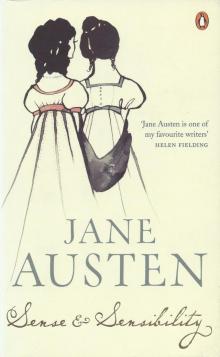 Sense and Sensibility
Sense and Sensibility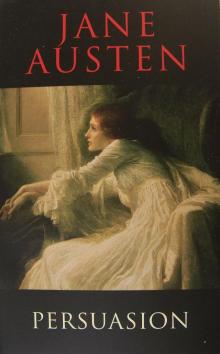 Persuasion
Persuasion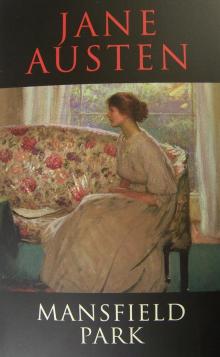 Mansfield Park
Mansfield Park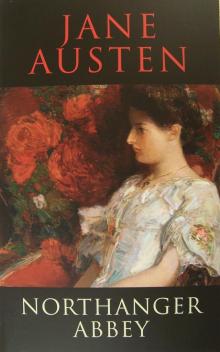 Northanger Abbey
Northanger Abbey Pride and Prejudice and Zombies
Pride and Prejudice and Zombies Pride and Prejudice
Pride and Prejudice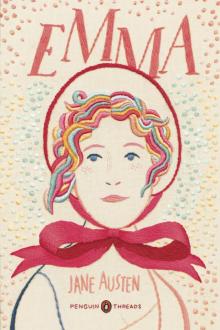 Emma
Emma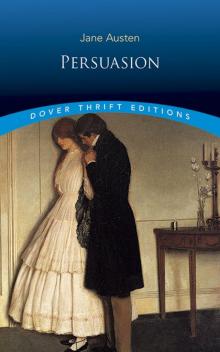 Persuasion (Dover Thrift Editions)
Persuasion (Dover Thrift Editions)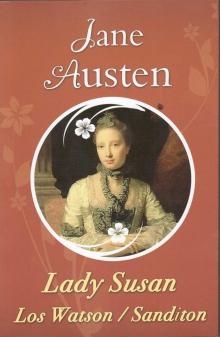 Lady Susan
Lady Susan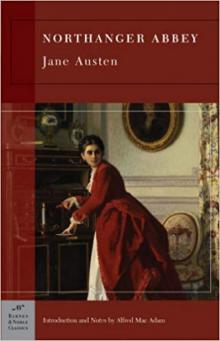 Northanger Abbey (Barnes & Noble Classics)
Northanger Abbey (Barnes & Noble Classics)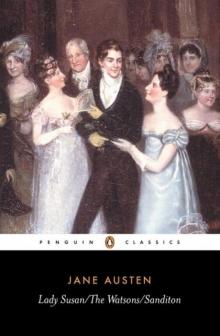 Lady Susan, the Watsons, Sanditon
Lady Susan, the Watsons, Sanditon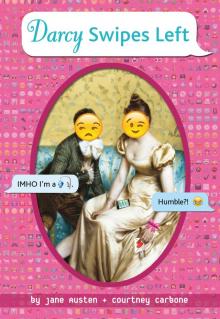 Darcy Swipes Left
Darcy Swipes Left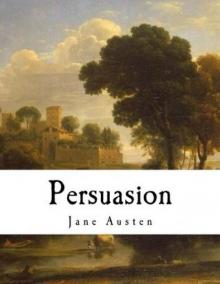 Persuasion: Jane Austen (The Complete Works)
Persuasion: Jane Austen (The Complete Works)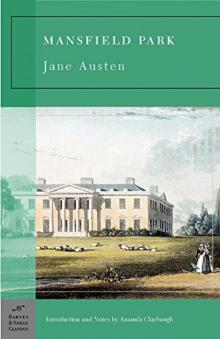 Mansfield Park (Barnes & Noble Classics Series)
Mansfield Park (Barnes & Noble Classics Series) Sense and Sensibility (Barnes & Noble Classics Series)
Sense and Sensibility (Barnes & Noble Classics Series)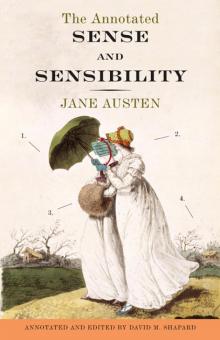 The Annotated Sense and Sensibility
The Annotated Sense and Sensibility Pride and Prejudice (Clandestine Classics)
Pride and Prejudice (Clandestine Classics)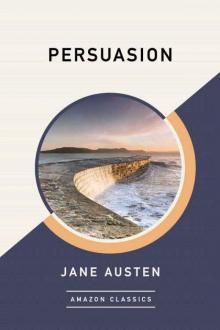 Persuasion (AmazonClassics Edition)
Persuasion (AmazonClassics Edition)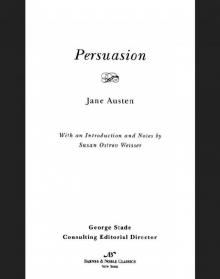 Persuasion (Barnes & Noble Classics Series)
Persuasion (Barnes & Noble Classics Series)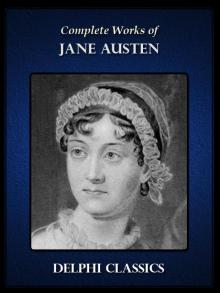 Complete Works of Jane Austen
Complete Works of Jane Austen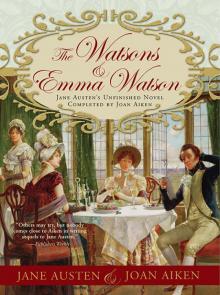 The Watsons and Emma Watson
The Watsons and Emma Watson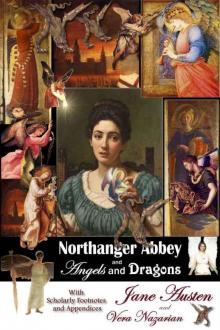 Northanger Abbey and Angels and Dragons
Northanger Abbey and Angels and Dragons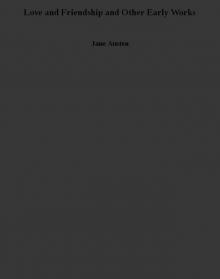 Love and Friendship and Other Early Works
Love and Friendship and Other Early Works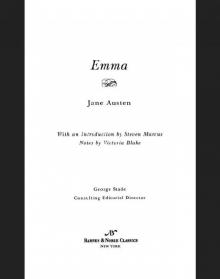 Emma (Barnes & Noble Classics Series)
Emma (Barnes & Noble Classics Series) Sanditon
Sanditon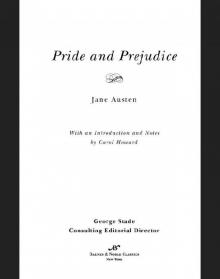 Pride and Prejudice (Barnes & Noble Classics Series)
Pride and Prejudice (Barnes & Noble Classics Series)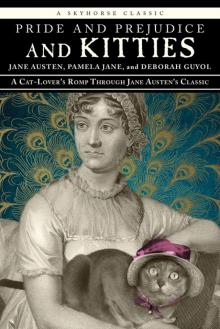 Pride and Prejudice and Kitties
Pride and Prejudice and Kitties The Annotated Northanger Abbey
The Annotated Northanger Abbey Oxford World’s Classics
Oxford World’s Classics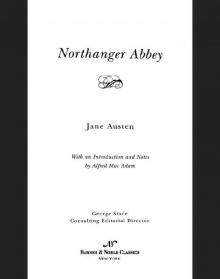 Northanger Abbey (Barnes & Noble Classics Series)
Northanger Abbey (Barnes & Noble Classics Series)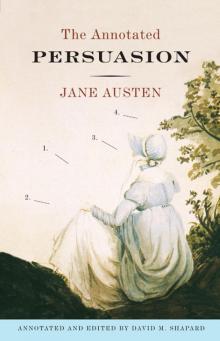 The Annotated Persuasion
The Annotated Persuasion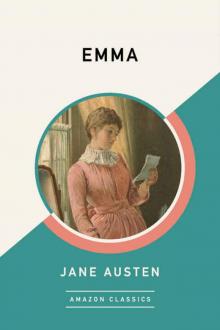 Emma (AmazonClassics Edition)
Emma (AmazonClassics Edition)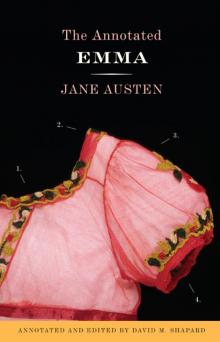 The Annotated Emma
The Annotated Emma The Annotated Mansfield Park
The Annotated Mansfield Park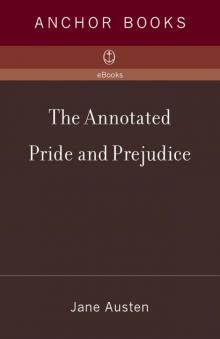 The Annotated Pride and Prejudice
The Annotated Pride and Prejudice